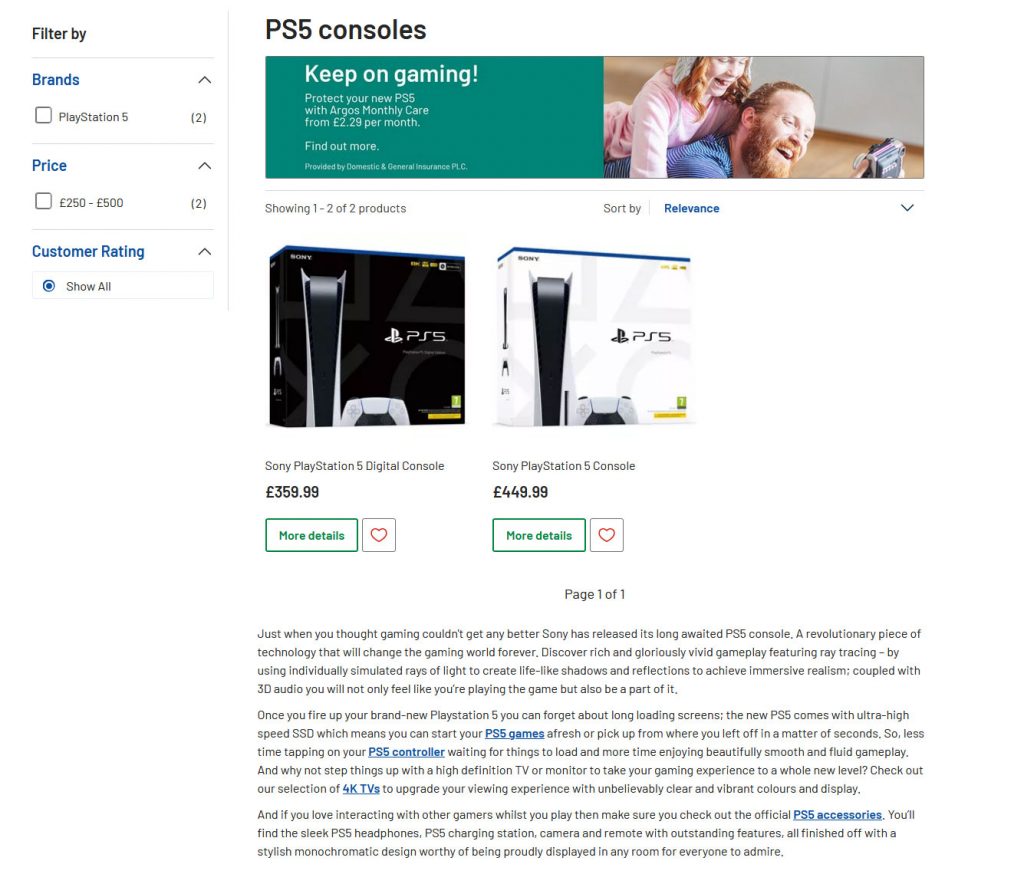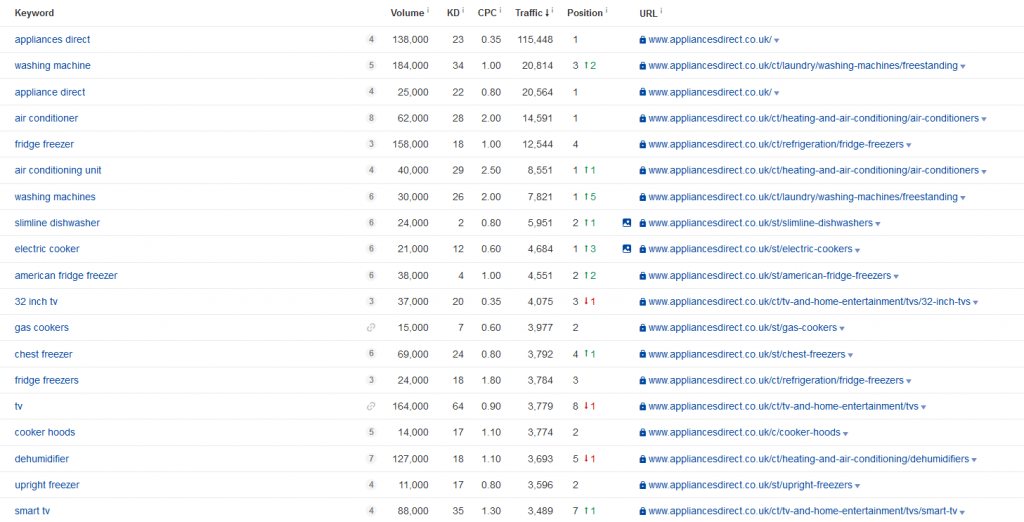
The Magento SEO tips most companies give include: adding a site map, speeding up the website, updating to the latest version of Magento and editing the robots.txt file – all basic stuff that should have been taken care of in the initial build.
None of the SEO tips given are likely to make anybody any money, other than the company you hire to implement them. And that’s the whole point of SEO, right? To increase your business’s income. You know that, and I know that (it’s just a shame most SEO companies don’t).
So here are 5 actual SEO tips for Magento that will make you more money…
Blogging With Clear Intent
If you already have a blog, great! If you don’t, get one installed. It doesn’t matter what industry you’re in, we can use the blog to drive more sales.
I usually use Ves Blog, but it’s ultimately not that important which one you use, it’s what you do with it that matters.
Virtual Silo’s/Topic Clusters To Main Pages
The first thing we want to do is create a virtual silo around each of your main keywords.
Let’s say you’re selling washing machines, and you have a Magento category pages targeting washing machines, we now want to answer all the questions we see in ahrefs around buying a washing machine through well researched blog posts.
It’s not enough to just answer the question with a simple yes/no answer, we need to go into depth with the answer and answer all the other things they may be wondering if they’re not sure about their initial question.
Next, we need to internally link each of these blog posts up to our main category page.
Do this for all of the main keywords on your website and keep punishing answers to questions as you find them. Start with the main ones in ahrefs for fastest results and then go into less commonly searched ones you find in Google Search Console.
This powers up the main category page and improves its chances of ranking. Why? Because:
- We’ve built a bunch of new pages about it’s topic, improving our topical relevancy.
- We’ve created a ton of internal links to our target page, making it look more important to Google’s bots.
- We’ve targeted a bunch of informational terms that will naturally get traffic, links and even sales.
Need I say more?
Targeting: “Best”, “Packages” and “For” Terms To Sell Products
You already know Magento is amazing, but I think you’re going to love it even more after this tip…
It’s something I’ve had some great success for my Magento SEO clients with, and I’m sure you’re going to on your site too.
Using a Magento widget, you can actually pull products into your blog posts dynamically.
This is a real game changer for those in an industry where product models come and go faster than you can update the pages.
Using this, you can target keywords that include “best”, “packages” and “for”, write a somewhat non specific article explaining what makes the best washing machine (for example), which is completely down to preference and needs so we just explain that and then dynamically pull in some product recommendations using the Magento widget and filters.
The best part? Customers love it because you’re guiding them on what’s right for them.
If you’re in an industry where product models don’t change often
Even better, now you can create the page and manually write about the products you want to recommend.
But don’t just push them to the one you want to see the most. Because if it doesn’t interest them they will click back and find another website, which hurts our SEO.
Instead focus on two things:
- Best products that match their search query
- Products with high search volume we want to rank for
Point number 2 comes back to the virtual siloing point I made earlier, we want to internally link to the pages we want to rank. So use those.
Add Keyword Modifiers To Your Category Pages Titles
This SEO tip is a lot shorter than the last, but it’s equally important. This one’s a missed opportunity by most companies so listen up.
Add transactional keyword modifiers to your category page titles to improve your rankings for terms with buyer intent.
Transactional keywords include: “buy”, “order”, “cheap”, “deals”, “online”, “purchase”, “free delivery”, “next day delivery”, “on finance”, and “sale”.
For example: Buy Washing Machines Online | Order Now, Free Delivery
We want anyone searching for terms a title tag like that is optimised for on our website, as they’re likely to buy our products.
Add Keyword Optimised Content To Category Pages

“what’s the point? No one’s gonna read it” I hear you thinking. Well Google does. So don’t add it above your products, add content below. Way below, below the pagination so it doesn’t interfere with the user experience.
If you’re a big company reading them (and I don’t mean “we’re planning on serious growth over the next 5 years”, I mean Argos, Asda, John Lewis) you can get away with a couple of sentences. As that works best for authorities websites with large amounts of branded search.
If you’re a smaller company, add 200 – 400 words, including h2 tags and using LSI keywords.
And if you’re struggling for things to say, talk about the benefits of owning whatever you’re selling, how to choose the right one for you, how delivery works and how they can get in touch if they have questions.
Also make sure this content is unique and not used elsewhere on the site. Google won’t penalise you for duplicated content, but it will ignore it.
You can use a tool like Page Optimizer Pro to get back exactly how many words, titles, keywords etc should be on your page if you’re targeting a keyword with a well developed SERP, but if there’s not countless pages with clear targeting for your keyword you should do as explained above and then test and tweak.
Create Filtered Category Pages
I think I coined the term “filtered category pages”, as it’s not something I’ve heard any other SEO ever talk about.
To explain this simply, people don’t only search for “washing machine” when they’re looking to buy a washing machine.
There’s a huge amount of traffic to be gained by targeting their more specific searches. The ones they do when they know what type of washing machine they want, but don’t know which model.
An example of a keyword to target with a filtered category page is “8kg washing machine”. They want an 8kg washing machine, so we create a page dedicated to only showing 8kg washing machines.
Some people might refer to these as simple long tail keywords, but we need to think in terms of filtered category pages as that’s exactly what we need to give the customer back to meet their searching intent.
Finding Competitor Keywords With ahrefs

The first way to find ideas for your filtered category pages is to see what your main competitors have done and copy what works.
Simply put their domain name into ahrefs and take a look through their main keywords that are bringing in traffic.
Take note of any high traffic pages that target specific terms like these in a Google sheet to be built later.
Finding Other Keywords In ahrefs
Sometimes companies overestimate their competitors marketing abilities and only copy what they do.
Although learning from who’s winning is a tried and tested way to success, there are often hidden gems yet to be discovered when it comes to filtered category pages.
You can put your seed keyword into the ahrefs keyword explorer and select phrase match to find a huge amount of keywords that include your product.
This is a time consuming process but it will pay off big, so get on it!
Send Traffic From Other Sources To Improve Rankings
This is another one no one talks about that can make a big impact on your business. It’s a bit more of an advanced SEO technique, but it’s one of the best things I’ve ever discovered.
Sending people from sources other than Google improves your Google rankings.
Sounds impossible for Google to even know your page is getting views when they aren’t the middle man but they do.
It seems they collect data from Google Chrome or any of their resources you load on your site such as Google Analytics, Google Fonts, Google Maps etc. to see how popular your page is.
So send traffic to your keyword targetted page from: cheaper ad platforms, email lists, push notifications, social media etc. to give Google the signals it needs to see your page is popular.
Make sure the traffic is good though, sending low quality traffic with short session durations isn’t going to do any good, it needs to be decent to send the right signals.
Frequently Asked Questions
And there you have it, 5 SEO tips for Magento that will actually make you money. Here are some FAQs you may have been wondering:
Most people writing guides on Magento SEO don’t actually do monthly client work for a living and so they resort to regurgitating the generic advice that is standard practice on all websites.
Building keyword targetted pages is always the most important tip for any ecommerce SEO campaign, as without them you can rank for the keyword.
Most companies don’t talk about these for one of two reasons. Either the writer doesn’t know about them (and its often a writer writing the guide and not an SEO) or they’re trying to rank for a keyword based on copying what’s currently working in the SERPs. Although this is a good approach to rank in Google, it means most guides are a total waste of time.
If you’re new to ranking Magento websites in Google, you can check out my beginners Magento SEO guide here which covers all the basic setup.
